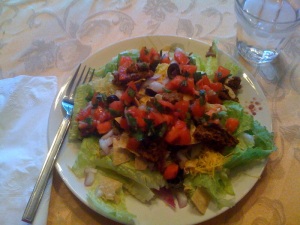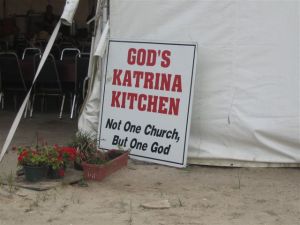This week is Hunger Action Week. To educate the public about the issue of hunger in communities, two organizations, Second Harvest Food Bank of Santa Clara and San Mateo Counties and United Way Silicon Valley, issued a challenge for people to try to eat on $4.50 a day, the average amount that those on Supplementary Nutrition Assistance Program (SNAP – formerly known as “food stamps”) receive. I decided to take the challenge and blog about it. See the previous three entries to find out how I prepared, and how I’ve been doing on the challenge.
I was definitely grumpy by yesterday afternoon. The challenge of eating on only $4.50 a day is wearing on me, and I am glad today is my last day. I’ll be writing more tomorrow about some of my conclusions from conducting this experiment, but for now I will say I don’t think this is enough money to keep someone from being hungry, or to keep them healthy. And the fact that the majority of households on SNAP include children, is disturbing. 
I’m ending the challenge tonight because of a commitment I’ve got this weekend starting tomorrow, but it officially runs through Saturday and you can still participate, if only for a day. I know I’ve been complaining about being hungry and grumpy, but I’m glad I did it. I’ve always been someone who considered herself to have compassion for the poor, the hungry and the homeless, but this made me think about their situation in a more concrete way. If you’re interested, go to www.450adaychallenge.org.
Here’s what I’m eating today:
Breakfast: cereal, milk, soy breakfast patty and a banana, $1.15
Lunch: leftover rice and beans, a nectarine, $1.14
Dinner: Tuna and White Bean Salad, rice
Tuna .74
Beans .44
Hard boiled Egg .20
Chopped Veggies .20
Brown Rice .12
Total 1.58
With my leftover money I snacked on a rice cake with a little bit of peanut butter, and a hard boiled egg.











